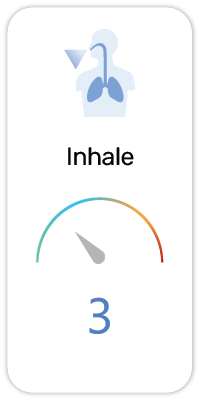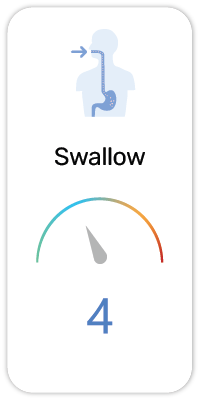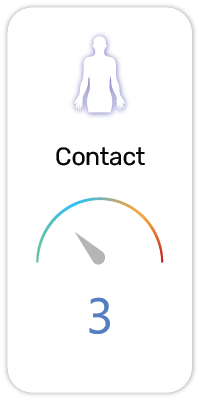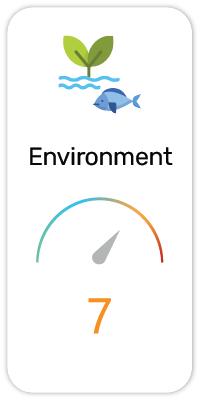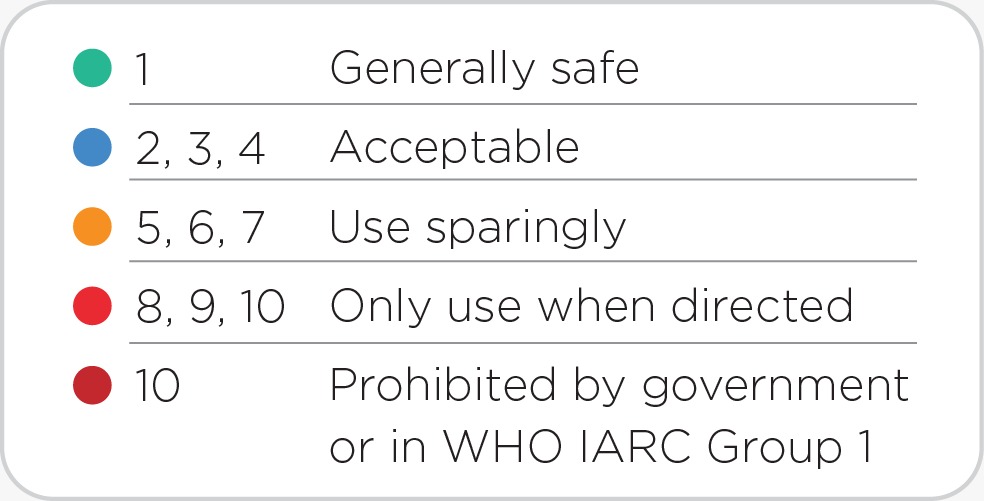Propylene Glycol(in 54,666 products)
Potential Risk Index®:
About:
Functions:
1. Drug / Medicine - Treats, alleviates, cures, or prevents sickness. As officially declared by a governmental drug/medicine regulatory body
2. Glazing Agent - A waxy coating which provides protection and prevents water loss
3. Humectant - Binds with water to increase skin hydration. Also enhances water absorption of the skin
4. Occlusive (Cosmetics) - Forms a protective layer to retain skin hydration
5. Preservative - Prevents and inhibits the growth of unwanted microorganisms which may be harmful
6. Slip Modifier - Increases spreadability of other ingredients
7. Solvent (Cosmetics) - Enhances the properties of other ingredients
Propane 1,2-diol also known as propylene glycol, is an organic compound that is commercially produced by the hydration of propylene oxide, but can also be derived from glycerol. It is used in various edible items such as coffee-based drinks, liquid sweeteners, ice cream, whipped dairy products and soda. It is also used as a humectant (E1520), solvent in many pharmaceuticals, and preservative in food and for electronic cigarettes. [1]
It is approved to use as food additive in EU and generally recognized as safe food substance in US.
Recent Findings:
Propylene glycol has shown antibacterial and antifungal properties although its effectiveness is weaker when compared to hexylene glycol. A solution of 30% propylene glycol is as effective as a solution of 10% hexylene glycol. Both solutions killed an array of Staphylococcus and E. coli within 20 h. [2]
Propylene glycol and its ethers exhibit a lack of toxicity. "They do not cause damage to the thymus, testes, kidneys, blood, and blood‐forming tissues". It does not produce any birth defects, and no toxicity was detected via inhalation even at high exposure levels. [3]
Propylene glycol is safe in large intravenous doses and even if overdosing occurs, the resultant hyperosmolality (when the concentration of salts in the blood is too high) can easily be reversed via hemodialysis. [4]
Propylene glycol has shown to alleviate immunotoxicity caused by human neutrophils (a type of white blood cell). At 0.5 and 1% propylene glycol mixed with phosphate-buffered saline, cytotoxicity decreased significantly as evidenced by the significant reduction in the chemiluminescence of IgG antibodies. [5]
In a review where propylene glycol was compared against ethylene glycol, "From the standpoint of lethality, acute effects, and reproductive, developmental, and kidney toxicity, the toxicity of EG (ethylene glycol) exceeds that of PG (propylene glycol). Further, localized dermal effects from EG and PG are both mild, with data suggesting that PG may have a skin contact sensitization potential." [6] In the body, "PG is primarily metabolized to lactic acid and pyruvic acid, both of which are normal constituents of the energy-generating process for humans and other mammals (i.e., the citric acid cycle)." [6]
A review of propylene glycol indicates that irritation and sensitization caused by propylene glycol may be possible. [7] This is complicated by the fact that propylene glycol reactivity does not show up well in patch tests, given the ubiquity of propylene glycol in personal care products. "It was observed that the lowest rate of incidence [of propylene glycol] concurred with the hottest and most humid months", this suggests "that part of PG’s irritant action was the result of excessive withdrawal of water from the skin because of PG’s humectant qualities". [7] In a separate study involving up to 45,138 patients between 1992 to 2002, around 1044 patients tested positively. [8] "This profile of patch test reactions is indicative of a slightly irritant preparation" although "No private or occupational exposures associated with an increased risk of PG sensitization were identified, except for lower leg dermatitis. Therefore, according to our patch test data, PG seems to exhibit very low sensitization potential, and the risk for sensitization to PG on uncompromised skin seems to be very low". [8]
Overall propylene glycol was found to be safe for animals and humans even in high-exposure environments. It is also used to control plasma osmolality as well as alleviate some forms of immunotoxicity. Undesirable dermal effects caused by propylene glycol appear to be non-substantial, though it is advised to seek immediate physician consultation upon any allergic reaction.
Fun Facts:
-Slightly sweet to taste
Scientific References:
1. PubChem: https://pubchem.ncbi.nlm.nih.gov/compound/1030
2. Antibacterial and antifungal properties of propylene glycol, hexylene glycol, and 1,3-butylene glycol in vitro. (Acta Derm Venereol. 1991;71(2):148-50)
3. Glycol Ethers: Ethers of Propylene, Butylene Glycols, and Other Glycol Derivatives (DOI:10.1002/0471435139.tox087.pub2)
4. Recognition, Treatment, and Prevention of Propylene Glycol Toxicity (DOI:10.1111/j.1525-139X.2007.00280.x)
5. Cosmetic Ingredient Review Expert Panel (J Am Coll Toxicol 13 (6): 437-91 (1994))
6. A Review of the Comparative Mammalian Toxicity of Ethylene Glycol and Propylene Glycol. (Crit. Rev. Toxicol., 29(4), 331–365. doi:10.1080/10408449991349230)
7. Propylene Glycol in Contact Dermatitis: A Systematic Review (Propylene Glycol in Contact Dermatitis. Dermatitis, (), 1–.) doi:10.1097/DER.0000000000000307
8. Skin-sensitizing and irritant properties of propylene glycol : Data analysis of a multicentre surveillance network (IVDK) and review of the literature. (Contact Derm., 53(5), 247–259.) doi:10.1111/j.0105-1873.2005.00693.x
Regulatory References:
1. EU Approved Food Additive [2018]
- E1520
2. Japan’s List of Designated Food Additives under Article 10 of the Food Sanitation Act
- Propylene Glycol
3. Canada List of Permitted Food Additives
- List 8 - Propylene Glycol
4. US FDA Generally Recognized As Safe (GRAS) Food Substances (21 CFR 184) [2017]
- § 184.1666 - Propylene glycol
Safety and Hazards (UN GHS):
1. Harmful if swallowed (H302)
2. Causes serious eye irritation (H319)
3. Very toxic to aquatic life with long lasting effects (H410)
Potential Health Concerns For:
1. Acidosis (PubMed ID:11560204)
2. Acidosis, Lactic (PubMed ID:19920159)
3. Acute Kidney Injury (PubMed ID:17717564)
4. Arrhythmias, Cardiac (PubMed ID:19920159)
5. Chemical and Drug Induced Liver Injury (PubMed ID:1669223)
6. Cough (PubMed ID:11555686)
7. Deafness (PubMed ID:1207541)
8. Dermatitis, Allergic Contact (PubMed ID:16191021)
9. Drug-Related Side Effects and Adverse Reactions (PubMed ID:17717564)
10. Dyspnea (PubMed ID:11555686)
11. Erythema (PubMed ID:6743462)
12. Hemoglobinuria (PubMed ID:8563446)
13. Hemolysis (PubMed ID:19920159)
14. Hyperkinesis (PubMed ID:29432853)
15. Hypotension (PubMed ID:19920159)
16. Kidney Diseases (PubMed ID:1669223)
17. Kidney Tubular Necrosis, Acute (PubMed ID:19920159)
18. Neurobehavioral Manifestations (PubMed ID:29432853)
19. Pain (PubMed ID:389262)
20. Phlebitis (PubMed ID:7076458)
21. Renal Insufficiency (PubMed ID:7477798)
22. Seizures (PubMed ID:19920159)
23. Signs and Symptoms (PubMed ID:11555686)
24. Thrombophlebitis (PubMed ID:300540)
User Comments:
Submit


